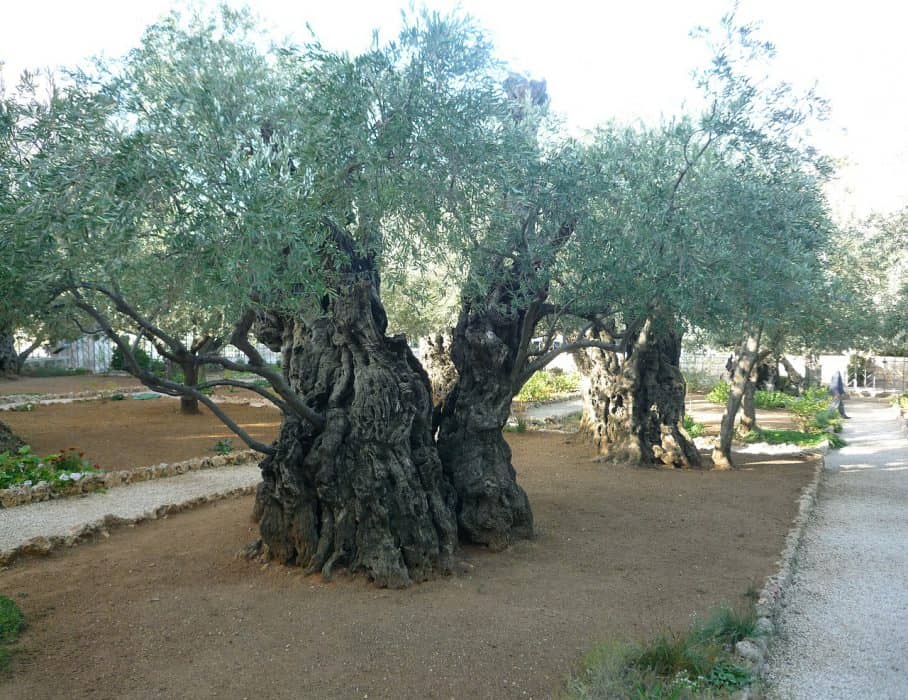Every January/February (depending on the Hebrew Calendar) Jews around the world celebrate Tu B’Shvat, the new year for the trees. The name of the holiday is not a proper noun like “Thanksgiving” or “Halloween,” but a date in the Hebrew calendar. Each Hebrew letter can also function as a number, and the “tu” part of the name combines the number nine and six to equal 15 (normally it would be 10 and 5, but that’s not allowed because it’s letters are in God’s name; don’t ask…it’s a long story). “Shvat” is the name of a Hebrew month. So “Tu B’Shvat” simply means “on the fifteenth of Shvat”.
But what exactly is a new year for the trees and why do we need one? To understand the need for a special year for trees you have to understand that historically, being a part of the Jewish people meant adhering to the Jewish legal system, which Orthodox Jews still do. While many of us may be familiar with a few of the rules of the Jewish legal system-the prohibition against eating pork or using money on the Sabbath for example-few outside the Orthodox Jewish community truly understand its totality. Jewish law (halacha in Hebrew) is supposed to govern every aspect of your life, from the blessing you say when you wake up in the morning to how you conduct business to when you need to pray. And, like any other complete legal system, the Jewish system requires all sorts of definitions. So when the Jewish Bible prohibits Jews from eating the fruit of certain trees for the first three years, it requires a specific date, in this case, Tu B’shvat, the new year of the trees.
For most of the last 2,000 years, Tu B’shvat was quite a minor holiday, but that began to change after the expulsion of the Jews from Spain in 1492. This expulsion led to a large influx of Jews to the Ottoman Empire, including to the Ottoman province of Palestine (a name given by the Romans as a punishment to the Jews, who had revolted against Roman authority one too many times). Among the places, these exiles arrived was Tzfat, where they continued to develop Kabbalah (Jewish mysticism) in an attempt to understand what had led to the dramatic and terrible end of their centuries-old communities in Spain. When they returned to their historic homeland in the land of Israel they created a special Tu B’shvat meal modeled on the Passover Seder, which included eating different types of fruits and drinking four cups of wine from white to red to resemble the changing of the seasons.
While Tu B’shvat was celebrated by these Jews back in Spain, it is especially meaningful in Israel, since it matches up with the seasons. Inevitably it’s right around Tu B’Shvat when the Almond trees burst gloriously into bloom. As is typical in Kabbalah, the various fruits and wines were given symbolic meaning as well, and they believed that consuming them in certain ways with certain blessings would help bring about the perfection of the world.
The early Zionists of the late 1800s who moved back to Israel after hundreds of years of exile were similarly enamored of this holiday. Tu B’shvat is a holiday that many of them would have celebrated back home, but it wouldn’t have matched up with the seasons. It’s a little funny to be celebrating the first fruits in February in Eastern Europe. In Israel, all of a sudden the holiday made sense. But it had additional value to the early Zionists as well since the Zionist movement was about reconnecting with the land of Israel. At this time the land itself wasn’t in great shape; it was a backwater province of the failing Ottoman Empire, which had just been almost completely deforested to help build their new railway connecting the empire’s heartland in Asia Minor with the Muslim holy sites in Saudi Arabia. What better way for these pioneers to connect their Jewish upbringing with their new Zionist values than by emphasizing Tu B’Shvat and planting trees? This emphasis on reforesting the country led to vast new forests. In fact, Israel was the only country in the world to have a net gain in trees over the course of the 20th century.
In modern times the holiday has continued to be an important part of the Jewish calendar both in Israel and abroad. It still serves as a way for Jews to connect viscerally to our ancient homeland, but it also fits in perfectly with the modern desire to protect the environment. In many communities it’s taken on the role of something like a Jewish Earth Day, combining the traditional tree planting with lessons or activities focused on the Jewish people’s or all of humanity’s role in responsible stewardship of the planet.


